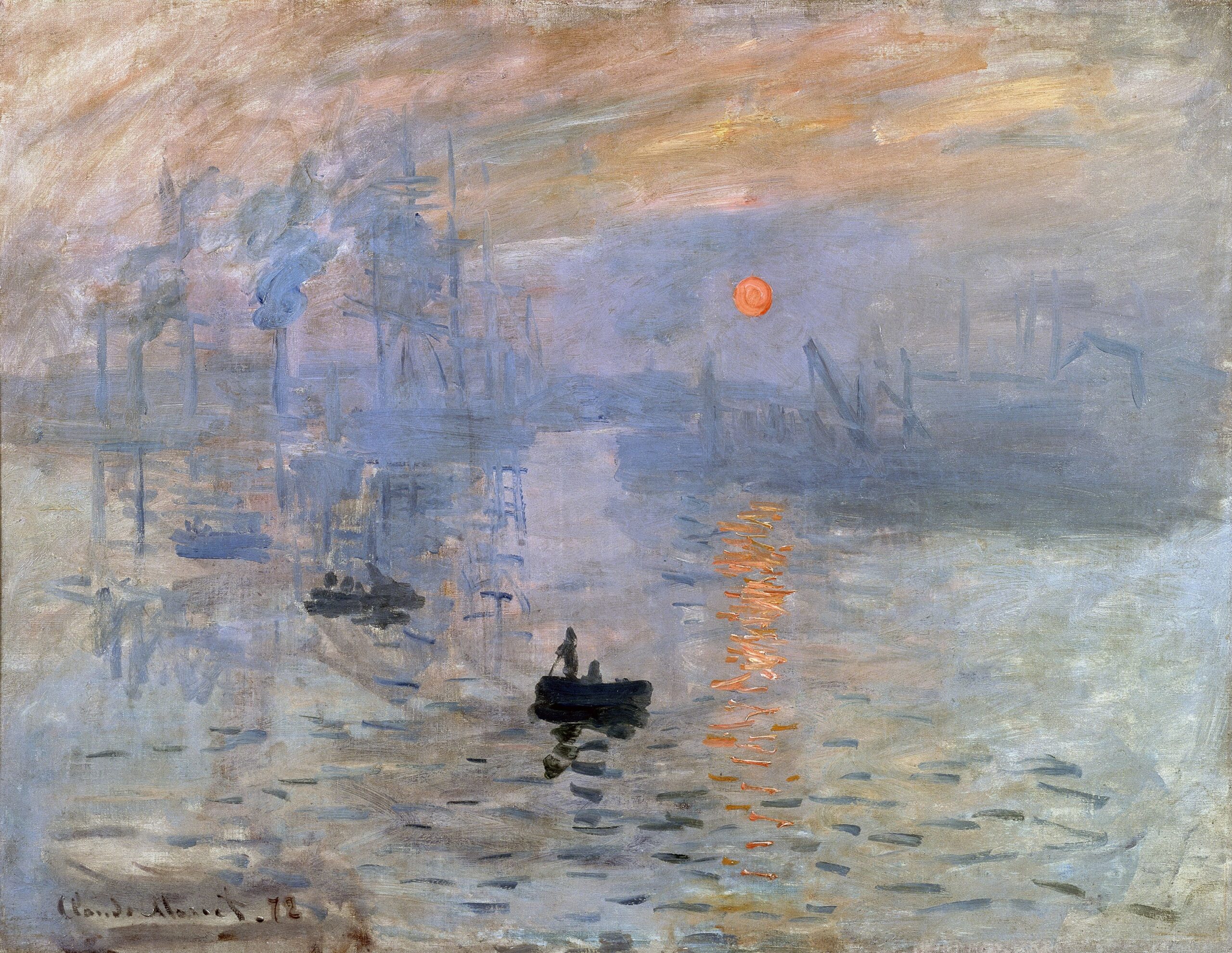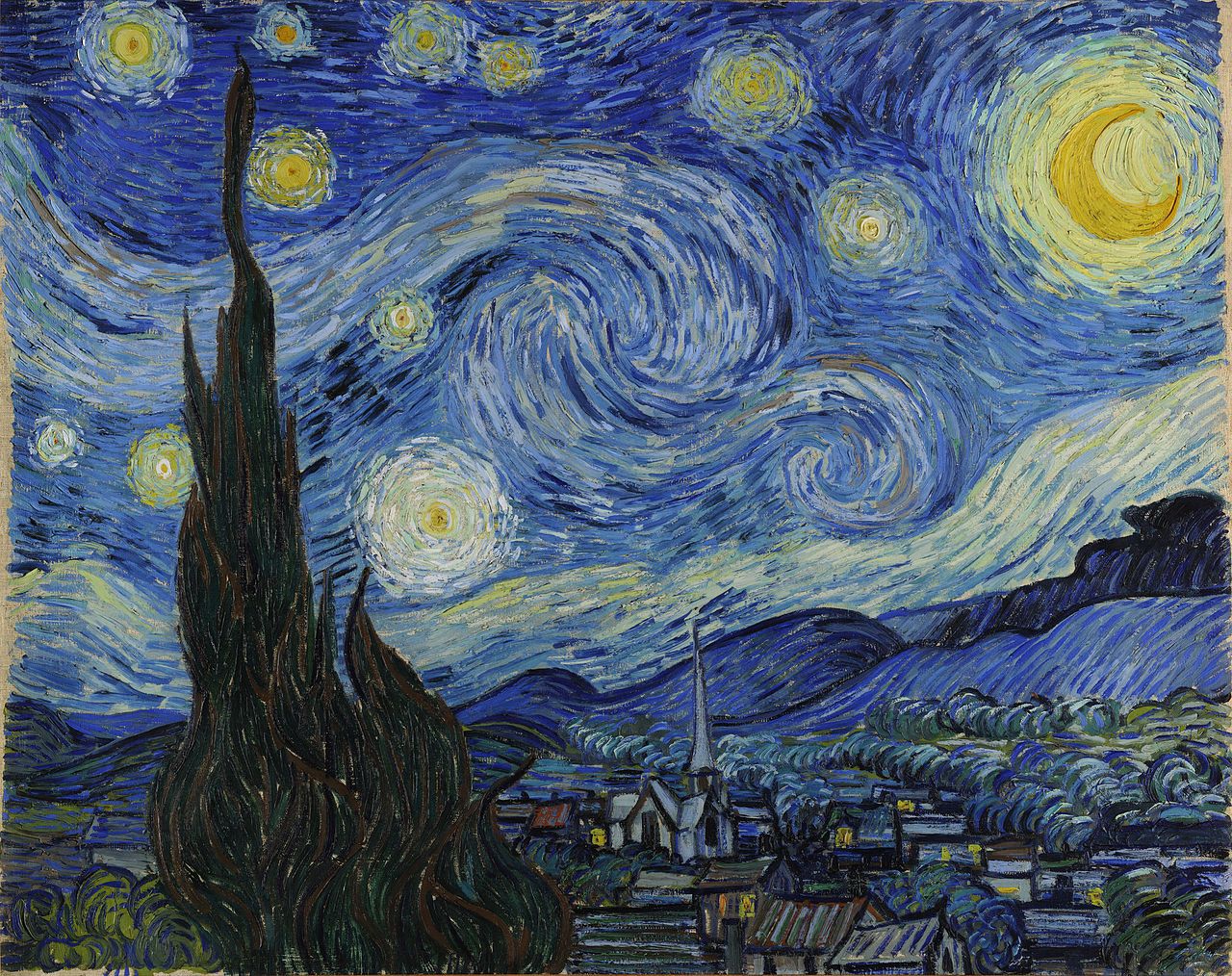Preferences and Perspectives - The Romantic Era
The Romantic era was a time of great change and diversity in the art world. Two of the most prominent styles that emerged during this period were Impressionism and Post-Impressionism. These styles, while related, offer contrasting approaches to art that reflect the evolving perspectives and intentions of their respective artists.
Impressionism
Impressionism, which began in the late 19th century, was characterized by its focus on light, color, and everyday scenes. Artists aimed to capture the fleeting moments of life, often painting en plein air (outdoors) to observe the changing effects of light and atmosphere. This style emphasized spontaneity and the artist's immediate perception of the scene.

Claude Monet, Impression, Sunrise, 1872
One of my favorite Impressionist works is Claude Monet's "Impression, Sunrise" (1872). In this painting, Monet uses loose brushstrokes and a vibrant color palette to depict the harbor of Le Havre at sunrise. The interplay of light and shadow creates a sense of movement and immediacy, drawing the viewer into the moment. The use of color, light, and texture are key elements that bring this piece to life.
Edgar Degas, The Dance Class, 1874
Another notable Impressionist painting is Edgar Degas' "The Dance Class" (1874). Degas captures a behind-the-scenes look at a ballet class, focusing on the dancers' graceful movements and the play of light on their costumes. The composition and use of perspective give the viewer a sense of being present in the room, observing the dancers as they practice.
Post-Impressionism
Post-Impressionism emerged as a reaction to the limitations of Impressionism, with artists seeking to explore more symbolic and emotional content in their work. This style is marked by a greater emphasis on structure, form, and the use of color to convey deeper meanings.

Vincent van Gogh, Starry Night, 1889
Vincent van Gogh's "Starry Night" (1889) is a quintessential example of Post-Impressionism. Van Gogh's swirling, expressive brushstrokes and bold use of color create a dreamlike, emotional landscape. The painting conveys a sense of turbulence and intensity, reflecting the artist's inner turmoil and fascination with the night sky. The elements of line, color, and emotion are powerfully intertwined in this work.

Paul Cézanne's "Mont Sainte-Victoire" (1902-1904) is another significant Post-Impressionist piece. Cézanne's approach to this landscape is more structured and analytical, with carefully constructed forms and a subtle, harmonious color palette. The painting reflects his intention to capture the underlying order and geometry of nature, offering a contemplative and serene perspective.
Preferences and Intentions
Between these two styles, I find myself more drawn to Impressionism. The spontaneity and emphasis on light and color resonate with my appreciation for capturing the beauty of everyday moments. Monet's and Degas' works, with their vibrant palettes and dynamic compositions, evoke a sense of immediacy and joy that I find compelling.
However, the intentions of Post-Impressionist artists like van Gogh and Cézanne are equally fascinating. Their desire to delve deeper into the emotional and structural aspects of their subjects offers a richer, more introspective experience. While I may prefer the aesthetic qualities of Impressionism, I deeply respect the intellectual and emotional depth that Post-Impressionism brings to the table.
Historical Context and Research
The rise of Impressionism coincided with significant changes in society, including the advent of photography and the industrial revolution. Artists sought to break away from traditional academic standards and capture the world as they saw it, embracing modernity and the fleeting nature of life. Research supports that Impressionists were influenced by these societal shifts, aiming to depict the transient beauty of their surroundings.
On the other hand, post-impressionism emerged as artists began to feel that Impressionism lacked depth and structure. They sought to explore new ways of expressing their inner experiences and the underlying order of the natural world. This movement was influenced by the growing interest in psychology and the exploration of the human psyche.
In conclusion, both Impressionism and Post-Impressionism offer unique perspectives and intentions that reflect their time's rapidly changing attitudes and trends. While my personal preference leans towards the immediacy and vibrancy of Impressionism, I appreciate the emotional and structural depth of Post-Impressionism. By examining the works of Monet, Degas, van Gogh, and Cézanne, we can gain a deeper understanding of the diverse artistic landscape of the Romantic era.
Works Cited
The Dancing Class by Edgar Degas, https://www.impressionists.org. Accessed 28 October 2024.
Gleeson, Maura. “Smarthistory – Claude Monet, Impression, Sunrise.” Smarthistory, 8 August 2023, https://smarthistory.org. Accessed 28 October 2024.
Harvey, Ben. “Smarthistory – Paul Cézanne, Mont Sainte-Victoire.” Smarthistory, https://smarthistory.org. Accessed 28 October 2024.
Herbert, Robert L. Impressionism: Art, Leisure, and Parisian Society. Yale University Press, 1988.
“Impressionism and Post-Impressionism | Oxford Art.” Oxford Art Online, https://www.oxfordartonline.com. Accessed 28 October 2024.
Paulson, Noelle. “Smarthistory – Vincent van Gogh, The Starry Night.” Smarthistory, https://smarthistory.org. Accessed 28 October 2024.
Rewald, John. Post-impressionism, from Van Gogh to Gauguin. Museum of Modern Art, 1978.
I liked your analysis! You did a great job explaining the differences between the intentions of Impressionist vs Post-impressionism art! How impressionism was about light, fleeting moments, and everyday scenes while post-impressionism was emotional and symbolic. Impression sunrise was apparently one of the paintings that popularized and named Impressionism Art. It received criticism for its sketchiness and they wondered why it was in a gallery so grand if it was nothing more than a mere impression. Thus, Impressionism got its name. I agree with you in that I prefer impressionism. I think they are beautiful, and I enjoy the light colors and blurred lines. I like that they capture everyday moments, and moments that would be taken for granted.
ReplyDeleteI appreciate the way you explained the differences between Impressionism and Post-Impressionism. It sums up how they differ from each other well. In my opinion, I prefer Post-Impressionism. I like the exploration into the emotional experiences of the artist as an inspiration for the artwork, but I also prefer Impressionism as a way to depict the world over, say, Realism. I also think you chose great artists, as Monet and Degas are classic examples of Impressionism, and van Gogh is the go-to Post-Impressionist. Something interesting I found while researching Monet was that when he died, the black cloth draped over his coffin at his funeral was replaced with a colorful one covered in flowers as there was to be "No black for Monet". I just thought it a sweet gesture.
ReplyDeleteHey Olivia, I'm fascinated how these portraits hold great meaning with both Impressionism and Post-Impressionism. I love the 2 portraits chosen for Post-Impressionism. Specifically talking about "Starry Night", I'm always so amazing how expressive this masterpiece is when I see it. The use of color added in with the expressive brush strokes, really invoke that sense of intensity and an emotional environment. I would love to add how the contrast of this beautiful portrait embraces both natural and unnatural verses of reality. Great Post!
ReplyDelete